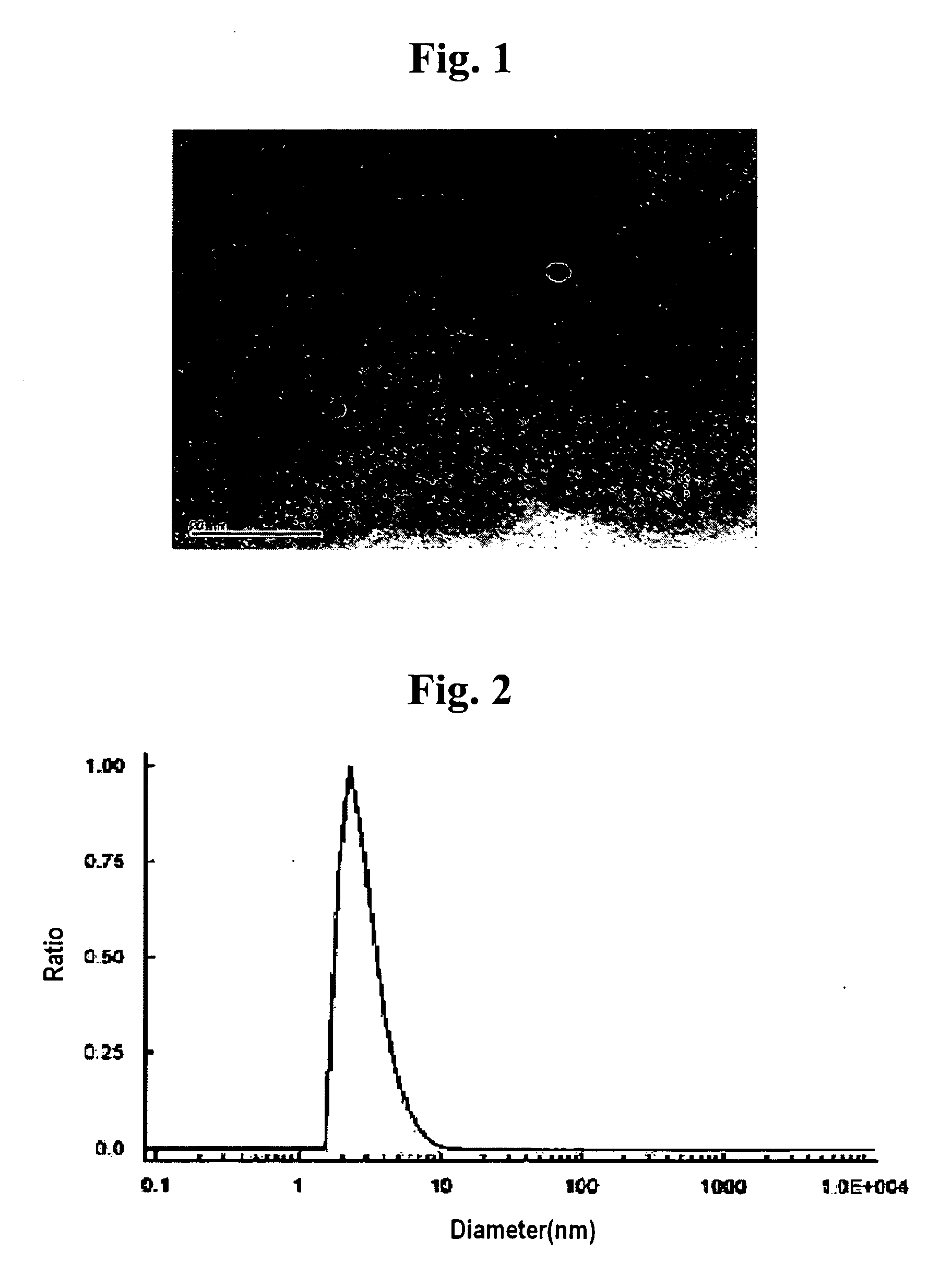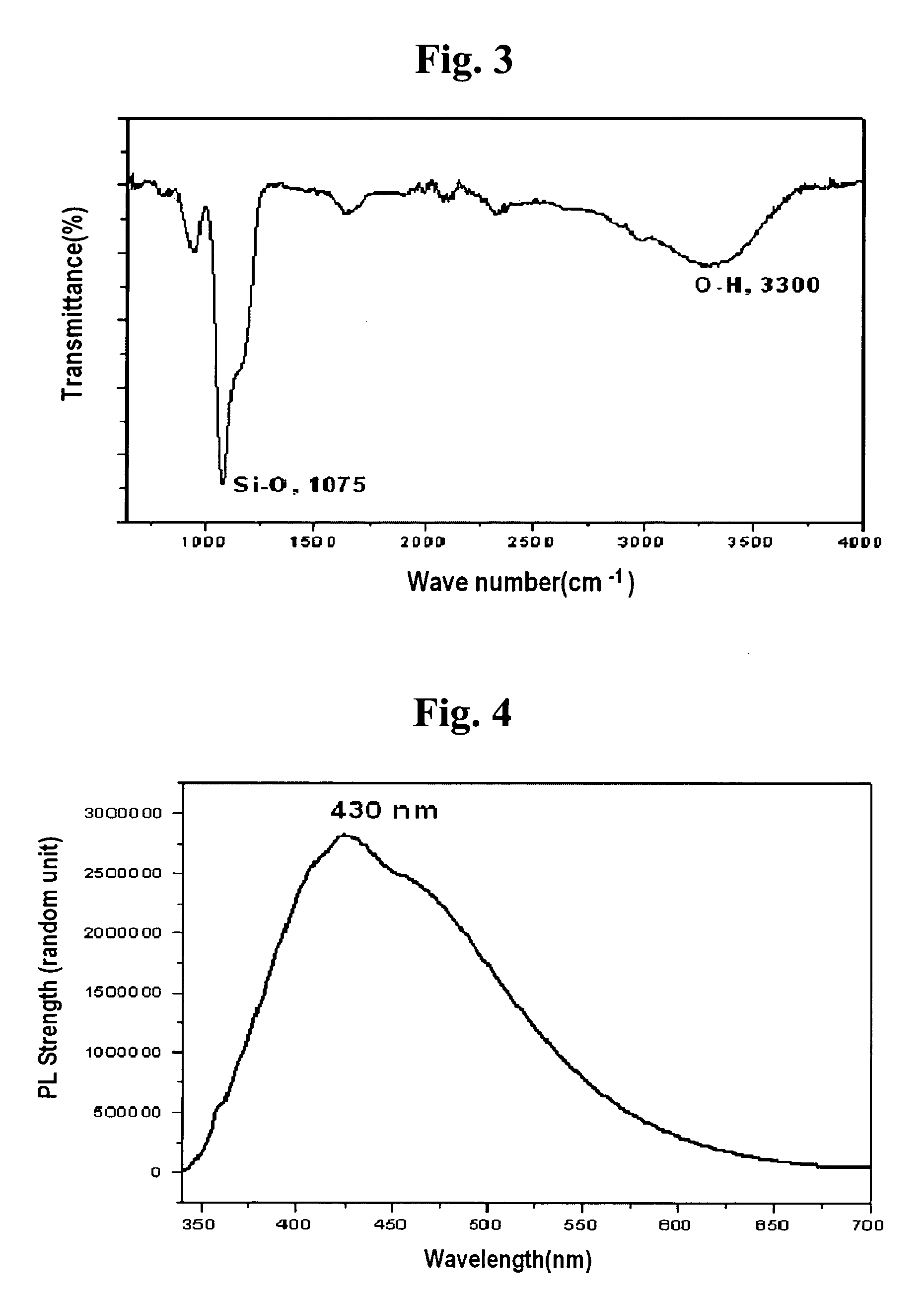Method of preparing biocompatible silicon nanoparticles
a biocompatible silicon and nanoparticle technology, applied in silicon compounds, cellulosic plastic layered products, applications, etc., can solve the problems of low quantum efficiency, complex preparation process, and inability to use for multiple detection of biomolecules, and achieve high biocompatibility and dispersion stability, and easy mass production
- Summary
- Abstract
- Description
- Claims
- Application Information
AI Technical Summary
Benefits of technology
Problems solved by technology
Method used
Image
Examples
example 1
[0034] After 2 g of metal sodium (purity: 99.9%) and 3 g of silicon powders (purity: 99.999%, Alfa) were added to a platinum tube, the tube was sealed by putting in a quartz ample and reacted at 90° C. for a day so as to obtain 4 g of sodium silicide.
[0035] A hundred ng of sodium silicide obtained above and 50 ml of DGDE were added to a 100 ml-volumetric glass conical flask equipped with a ultrasonic probe having a diameter of 10 mm under argon atmosphere (purity: 99.999%, Alfa). Further, ultrasonic waves having an electric power of 350 W and a frequency of 20 kHz were irradiated thereto at room temperature for 1 hour to obtain a dark brown silicon nanoparticle colloid.
[0036] As a result of observing the silicon nanoparticle colloid thus obtained with a transmission electron microscope (TEM), it was found that the silicon nanoparticle colloid is comprised of spherical nanoparticles having an average particle size ranging from 1 to 5 nm (see FIG. 1). Further, the analysis for a par...
PUM
| Property | Measurement | Unit |
|---|---|---|
| Fraction | aaaaa | aaaaa |
| Time | aaaaa | aaaaa |
| Power | aaaaa | aaaaa |
Abstract
Description
Claims
Application Information
 Login to View More
Login to View More - R&D
- Intellectual Property
- Life Sciences
- Materials
- Tech Scout
- Unparalleled Data Quality
- Higher Quality Content
- 60% Fewer Hallucinations
Browse by: Latest US Patents, China's latest patents, Technical Efficacy Thesaurus, Application Domain, Technology Topic, Popular Technical Reports.
© 2025 PatSnap. All rights reserved.Legal|Privacy policy|Modern Slavery Act Transparency Statement|Sitemap|About US| Contact US: help@patsnap.com


